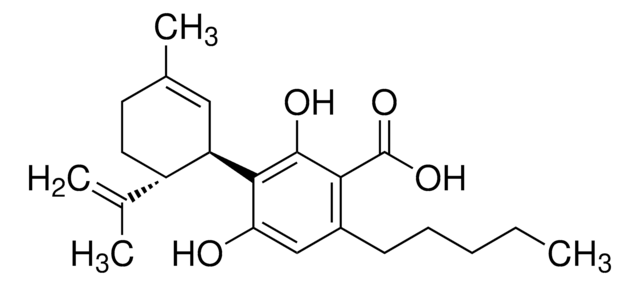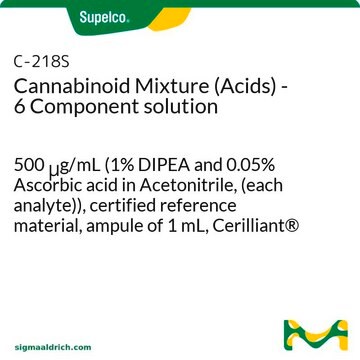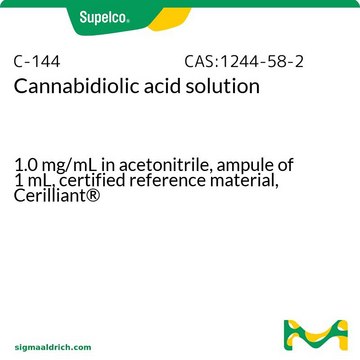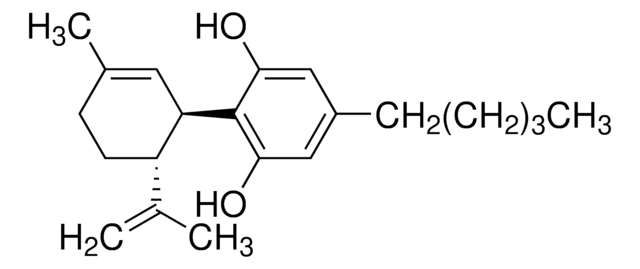Kluczowe dokumenty
39961
Cannabidiolic acid
analytical standard
Synonim(y):
CBDA
About This Item
Polecane produkty
klasa czystości
analytical standard
Poziom jakości
Próba
≥95% (HPLC)
okres trwałości
limited shelf life, expiry date on the label
kontrola substancji
USDEA Schedule I; Home Office Schedule 1; regulated under CDSA - not available from Sigma-Aldrich Canada
metody
HPLC: suitable
gas chromatography (GC): suitable
solid phase extraction (SPE): suitable
przydatność
in accordance for H-NMR
Zastosowanie
forensics and toxicology
pharmaceutical (small molecule)
veterinary
format
neat
temp. przechowywania
−20°C
ciąg SMILES
CCCCCc1cc(O)c([C@@H]2C=C(C)CC[C@H]2C(C)=C)c(O)c1C(O)=O
InChI
1S/C22H30O4/c1-5-6-7-8-15-12-18(23)20(21(24)19(15)22(25)26)17-11-14(4)9-10-16(17)13(2)3/h11-12,16-17,23-24H,2,5-10H2,1,3-4H3,(H,25,26)/t16-,17+/m0/s1
Klucz InChI
WVOLTBSCXRRQFR-DLBZAZTESA-N
Szukasz podobnych produktów? Odwiedź Przewodnik dotyczący porównywania produktów
Opis ogólny
Zastosowanie
Hasło ostrzegawcze
Warning
Zwroty wskazujące rodzaj zagrożenia
Zwroty wskazujące środki ostrożności
Klasyfikacja zagrożeń
Acute Tox. 4 Oral - Repr. 2
Kod klasy składowania
11 - Combustible Solids
Klasa zagrożenia wodnego (WGK)
WGK 3
Temperatura zapłonu (°F)
Not applicable
Temperatura zapłonu (°C)
Not applicable
Środki ochrony indywidualnej
Eyeshields, Gloves, type N95 (US)
Wybierz jedną z najnowszych wersji:
Masz już ten produkt?
Dokumenty związane z niedawno zakupionymi produktami zostały zamieszczone w Bibliotece dokumentów.
Klienci oglądali również te produkty
Nasz zespół naukowców ma doświadczenie we wszystkich obszarach badań, w tym w naukach przyrodniczych, materiałoznawstwie, syntezie chemicznej, chromatografii, analityce i wielu innych dziedzinach.
Skontaktuj się z zespołem ds. pomocy technicznej














